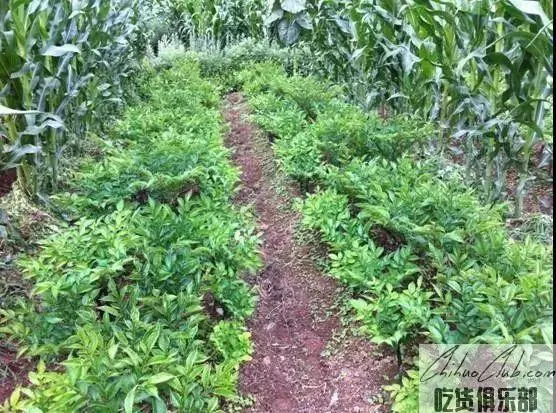
Liuzhi konjac
-
Update date::
-
Date of protection::
-
Protected range:The origin of Liuzhi Konjac is the administrative area under the jurisdiction of Liuzhi District, Liupanshui City, Guizhou Province.
-
Related origin:guizhou liupanshuishi-dayongzhen liupanshuishi-guanzhaizhen liupanshuishi-jiulongjiedao liupanshuishi-langdaizhen liupanshuishi-longhezhen liupanshuishi-luobiebuyizuyizuxiang liupanshuishi-mugangzhen liupanshuishi-niuchangmiaozuyizuxiang liupanshuishi-suojiamiaozuyizuhuizuxiang liupanshuishi-tashanjiedao liupanshuishi-xinchangxiang liupanshuishi-xinhuazhen liupanshuishi-xinyaozhen liupanshuishi-yanjiaozhen liupanshuishi-yinhujiedao liupanshuishi-yueliangheyizubuyizumiaozuxiang liupanshuishi-zangkezhen liupanshuishi-zhongzhaimiaozuyizubuyizuxiang liupanshuishi-liuzhitequ liupanshuishi
-
Category:
The six konjac is a specialty of the Liuzhishui Special Zone in Liupanshui, Guizhou. The Liuzhi Special Zone has planted more than 3,800 acres of konjac. Six konjac are widely planted in Langka, Mugang, Xinyao, Xinhua and other towns and towns, and they have conquered many food lovers with their unique taste.
[Eating method] 1. The whole plant of konjac is poisonous, and the tuber is the most, it can not be eaten raw, and it needs to be processed before it can be eaten. 2, boiled konjac, connotation peptide, multi-collagen protein, multi-inorganic salt, multi-cellulose, multi-antigen, multi-vitamin, has relieve fatigue, nourish yin and kidney, its complex protein is more man's treasure, with delay, increase Big, thickening effect. For female friends, it has the effect of relieving menstrual eschar, delaying menopause, acne beauty, keeping evergreen, and even better the effect of sheep placenta! ! All ages! [Storage method] The market usually buys konjac products - konjac tofu 1, konjac tofu is not suitable for storage in summer, and the market-used konjac products are soaked in alkaline water, rinsed with water before eating. When there is no refrigerator in the house, cut into small pieces and soak in alkali water. You can also use the regular water for a short time, within three days. 2, if there is a refrigerator, you can cut the konjac tofu into small pieces (the size when eating), and then use a small bag to pack and freeze. Take out a small bag when you eat it. [Recommended recipes] Konjac Roast Duck, Konjac Tofu, Konjac Rose Flower, etc.
Six konjac quality technical requirements First, the variety of flowers konjac. Second, the site conditions Altitude 900m to 1600m, the soil is yellow soil, mountain yellow brown soil, red sand soil. The soil layer thickness is ≥30cm, the organic matter content is ≥1.0%, and the pH value is 5.5 to 7.0. Third, cultivation management 1. Seed selection: seed weight ≥ 30g. 2. Reproduction: planted from March to April, covering soil thickness 8cm to 10cm, planting density ≤90000 plants / hm2. 3. Fertilization: ≥25000kg of farmyard manure per hectare. 4. Environmental and safety requirements: The use of pesticides, fertilizers, etc. must comply with relevant national regulations. 4. Harvesting After the plant has been dried for 15 days, the soil will be digested when it is dry. V. Processing 1. Process: fresh konjac → pit cleaning → cleaning and peeling → slicing (block) → dry grinding (pulling) → packaging. 2. Process requirements: (1) Drying temperature: temperature 50 ° C to 60 ° C, time is 110 min to 120 min. (2) Grinding fineness: ≥ 60 mesh. Sixth, quality characteristics 1. Sensory characteristics: Fresh sputum: It is nearly spherical, the top is slightly sunken, the petiole is dark red, the epidermis is dark brown, the skin is thin, the flesh is milky white, slightly reddish, the texture is crisp and delicate, and there is mucus after cutting. There is a slight scent of fish oysters inherent in konjac. Dry powder: Uniform particles, white or yellowish, with the inherent smell of konjac fish. 2. Physical and chemical indicators: Fresh sputum: glucomannan ≥ 5.0%, protein ≥ 0.8%. Dry powder: glucomannan ≥ 55%, viscosity ≥ 6500mPa s, moisture ≤ 13%, ash ≤ 6.0%. 3. Safety and other quality technical requirements: Product safety and other quality technical requirements must comply with relevant national regulations.
Apply to:
Producers within the scope of the six konjac origins may apply to the Liuzhi Special Administrative Region Administration for the use of the “Special Mark for Geographical Indication Products”, which shall be reviewed by the Guizhou Provincial Bureau of Quality and Technical Supervision and announced to the General Administration of Quality Supervision, Inspection and Quarantine for approval. The testing mechanism of the six konjac is selected by the Guizhou Provincial Bureau of Quality and Technical Supervision in the testing institutions that meet the qualification requirements.